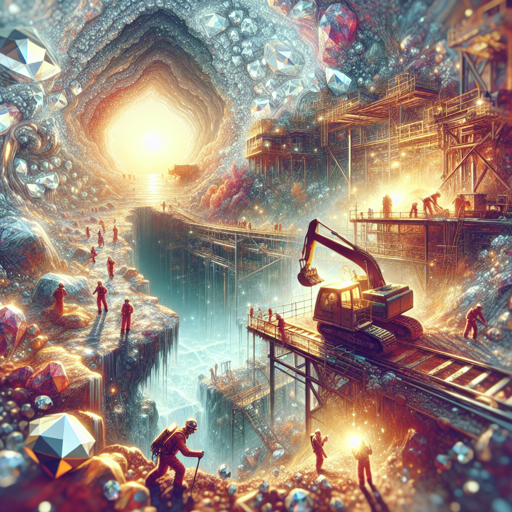Unearthing the Secrets of Diamonds
Delve into the intriguing world of diamond formation and mining, and uncover the sparkling secrets beneath the Earth's surface.

Introduction
Beneath the Earth’s surface lies an intricate, fascinating world of rock, minerals, and gemstones. Among these, diamonds stand out for their unique beauty and strength. Born under extreme conditions, these precious stones embark on a journey from deep within the Earth to the surface, and eventually, into our hands. But how do diamonds form, and how are they mined?
Diamond Formation
Diamonds are formed under extreme heat and pressure conditions that exist only about 100 miles beneath the Earth’s surface. These conditions cause carbon atoms to crystallize, forming diamonds. The process takes an estimated one to three billion years, essentially as old as the Earth itself, making diamonds a testament to the immense power and age of our planet.
The diamonds we find on the Earth’s surface were transported by violent volcanic eruptions. The magma from these eruptions cools to form a rock called kimberlite, which acts as a ‘carrier’ for the diamonds, protecting them on their journey to the surface.
Diamond Mining
Diamond mining is a complex process that involves a series of techniques, including open pit mining, underground mining, and alluvial mining. The type of mining process used depends on the “pipe” of kimberlite found, water depth, and the quality of the diamonds discovered.
| Type of Mining | Description |
|---|---|
| Open Pit Mining | This method involves removing layers of soil and rock to expose the diamond-bearing ore. |
| Underground Mining | Here, tunnels are dug deep into the Earth to reach the diamond-bearing ore. |
| Alluvial Mining | This method involves sifting through riverbed sediments to find diamonds carried by rivers from the primary source of the pipe. |
“The Earth is the only known place in the universe where diamonds can form. They are a testament to the strength, beauty, and resilience of our planet.” - Unknown
The Journey from Rough to Refined
Once the diamond is unearthed, it’s far from the dazzling gem we recognize. The rough diamond is transported to a sorting facility where it’s categorized by size, shape, quality, and color. Post this, the diamond is cut into the familiar faceted form we know and love, enhancing its natural brilliance.
The Impact of Diamond Mining
Diamond mining, while instrumental in the economy of many countries, has significant environmental and social impacts. It’s crucial to support responsible mining practices that protect the environment and the communities around the mines. The Kimberley Process is an international certification scheme that regulates trade in rough diamonds, aiming to prevent the flow of conflict diamonds.
Conclusion
Diamonds are a marvel of nature, a symbol of strength and beauty forged over billions of years. Their journey from the deep recesses of the Earth to our hands is a story of resilience and transformation, much like the Earth itself. As we appreciate their beauty, let us also remember the intricate processes that brought them to us and strive to make diamond mining a more sustainable and ethical practice.